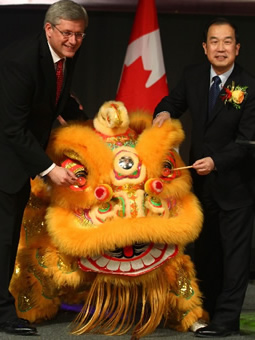Background : “ Investigation on the current situation of necking technology in high-end bearing field in China” is initiated by Academician Luo Jianbin, with the participation of many academicians and experts such as Wang Yuming, and the Department of Mechanical Engineering of Tsinghua University. Luoyang Bearing Research Institute Co., Ltd. and the Advanced Manufacturing Committee of Tsinghua Alumni Association jointly implement the advisory and evaluation project of the Chinese Academy of Sciences. The project aims to conduct a full investigation and in-depth systematic analysis of the status quo of necking technology in the field of high-end bearings in China, focusing on combing the technical problems, influence degree and depth of bearing ' necking ' of high-end host equipment in China, and put forward countermeasures for tackling key problems of high-end bearings in China in the future, suggestions for autonomous solutions and new ideas for innovative development of high-end bearings.
In October 2020, the project launch will be held in Luoyang. Academician Luo Jianbin, Academician Wang Yuming and more than 50 experts in bearing field, representatives of main engine users and members of the project team from the country participated. In July of this year, the project team came to Taiyuan with strong industrial strength to conduct a concentrated investigation on a number of key enterprises in the key research fields of engineering machinery and steel, and organized the second thematic discussion.
On July 8, organized by Department of Mechanical Engineering, Tsinghua University, Luoyang Bearing Research Institute Co., Ltd., Tsinghua Alumni Association Advanced Manufacturing Professional Committee, Tsinghua Advanced Manufacturing Industry Research Institute ( Luoyang ) Co., Ltd., Tsinghua Advanced Manufacturing Industry Research Institute ( Yangquan ) Co., Ltd., Tsinghua High-end Bearing Neck Technology Symposium was held at the Jinyang Lake International Conference Center in Taiyuan. Luo Jianbin, Academician of Chinese Academy of Sciences, Chairman of Advanced Manufacturing Committee of Tsinghua Alumni Association, Professor of School of Economics and Management of Tsinghua University, Secretary and Chief Professor of Su Shimin College, Gao Xu, participated in the meeting. Zhou Yu, President of China Bearing Industry Association, General Manager Gao Yuanan, Luoyang Bearing Research Institute Co., Ltd., Zhang Songmin, Party Secretary, School of Mechanical and Electrical Engineering, Henan University of Science and Technology, Professor of Taiyuan University of Science and Technology, Deputy Director of Engineering Research Center, Ministry of Heavy Machinery Education, Wang Jianmei and other guests and project team members attended the meeting. The meeting was chaired by Bai Xiaoyi, Assistant Director and Chief Executive Officer of Qingluo Base, Deputy Secretary-General of Advanced Manufacturing Committee, Tsinghua Alumni Association, and Project Secretary.
Zhou Yu said in his speech that bearing is the core basic parts, bearing industry is the national basic, strategic industry, plays an important supporting role in national economic development and national defense construction. Bearing research projects are of great significance to promote the localization of high-end bearings in China. It is hoped that the bearing project will promote the rapid development of bearing field in China.
Gao Yuan ' an introduced the project background, expected goals and results, key research content and recent research plan. He said that the development of high-end bearing is a multi-disciplinary, multi-professional, multi-factor system engineering, high technical requirements, the implementation of difficult. It is hoped that from the perspective of strategic focus, task traction and resource allocation, the bearing enterprises in Taiyuan, Luoyang, Chengdu, northeast and Yangtze River Delta are fully investigated, and the new innovative research and development system and production system of bearing in China are sorted out to promote the independent research and development and independent production of high-end bearing in China.
Li Wenchao, assistant general manager and director of technical center of Luoyang Bearing Research Institute Co., Ltd., introduced the research results of Taiyuan Heavy Machinery Group Co., Ltd., Taiyuan Iron and Steel Group Co., Ltd., and put forward a series of suggestions.
In the discussion of free communication, experts and enterprise leaders in the meeting are introduced and exchanged according to their research direction and content, the development situation of bearing industry in China, the problems and prospects faced by enterprises, and how to stimulate the vitality of scientific and technological innovation in the industry. Gao Xudong said that there is still much room for improvement in domestic bearing production technology. It is suggested that the interaction between bearing host enterprises and bearing production enterprises should be strengthened to form a pattern of interdependence, mutual support and common development. Zhang Songmin puts forward that the lack of talents is also one of the ' neck ' problems in the development of bearings in China. Colleges and universities and industries should cooperate closely with the demand for talents in the bearing industry, pay attention to the cultivation of talents in the industry, and enhance the support of skilled talents.
Finally, Academician Luo Jianbin said that he hoped that through research, the power and work achievements of materials, design, processing, policy and other aspects would be gathered together, and the key points affecting the technological innovation and development of high-end bearings would be summarized, and the countermeasures to solve the common key technical problems would be found, so as to promote the benign development of the bearing industry, help the integration of the industrial chain and the innovation chain to form a closed loop, and promote the localization breakthrough in the field of high-end bearings in China.
As the Secretary-General unit of the Advanced Manufacturing Committee of Tsinghua Alumni Association, Qingluo Base will continue to play the ' handshake zone ' function of colleges and enterprises, anchor the ' neck ' technology and talent problems in the development of bearing industry, clarify the independent research and development path of high-end bearings, and accurately cultivate high-quality applied technical and skilled talents, so as to lay a solid foundation for the development of the whole industrial chain of high-end bearings in China.
